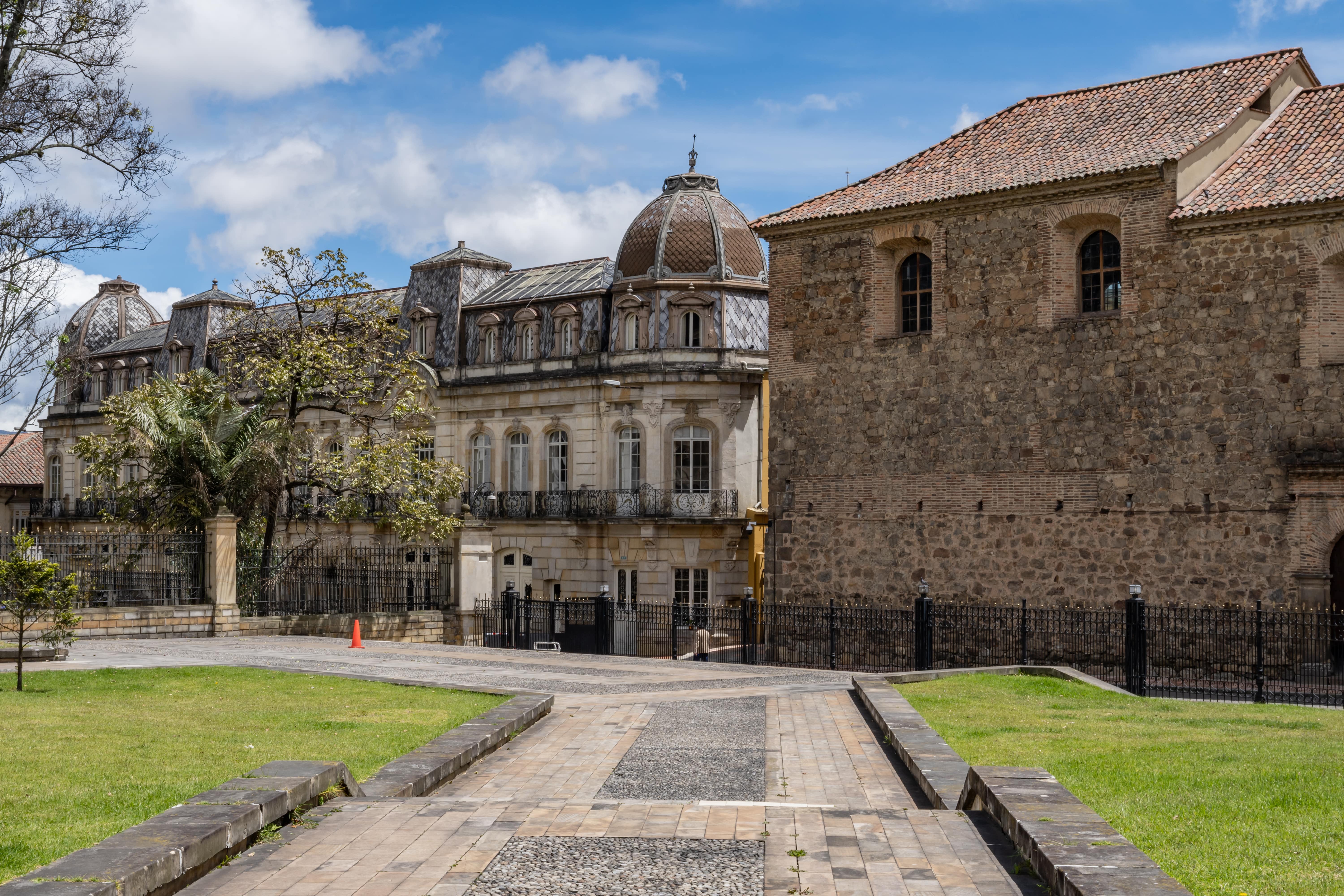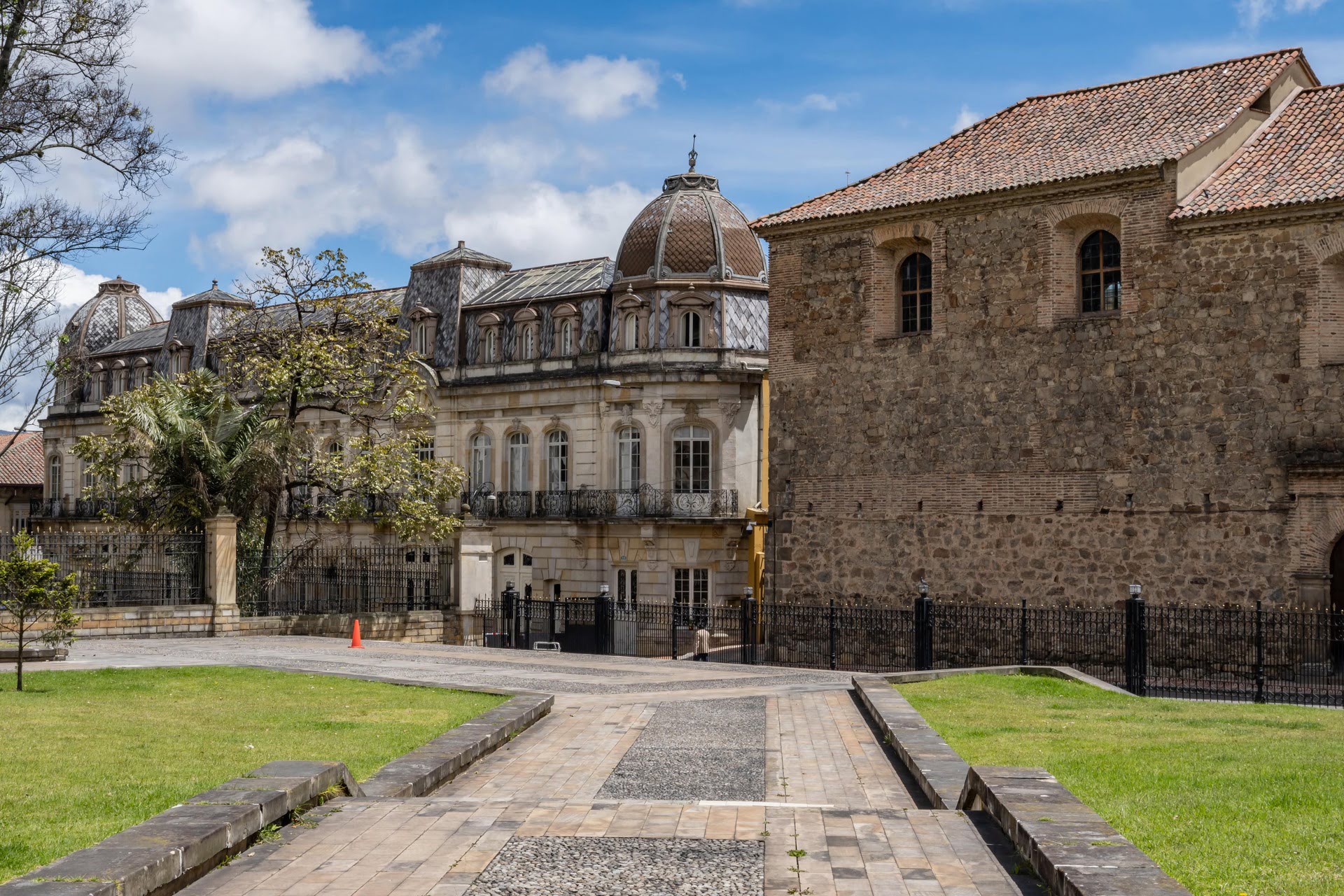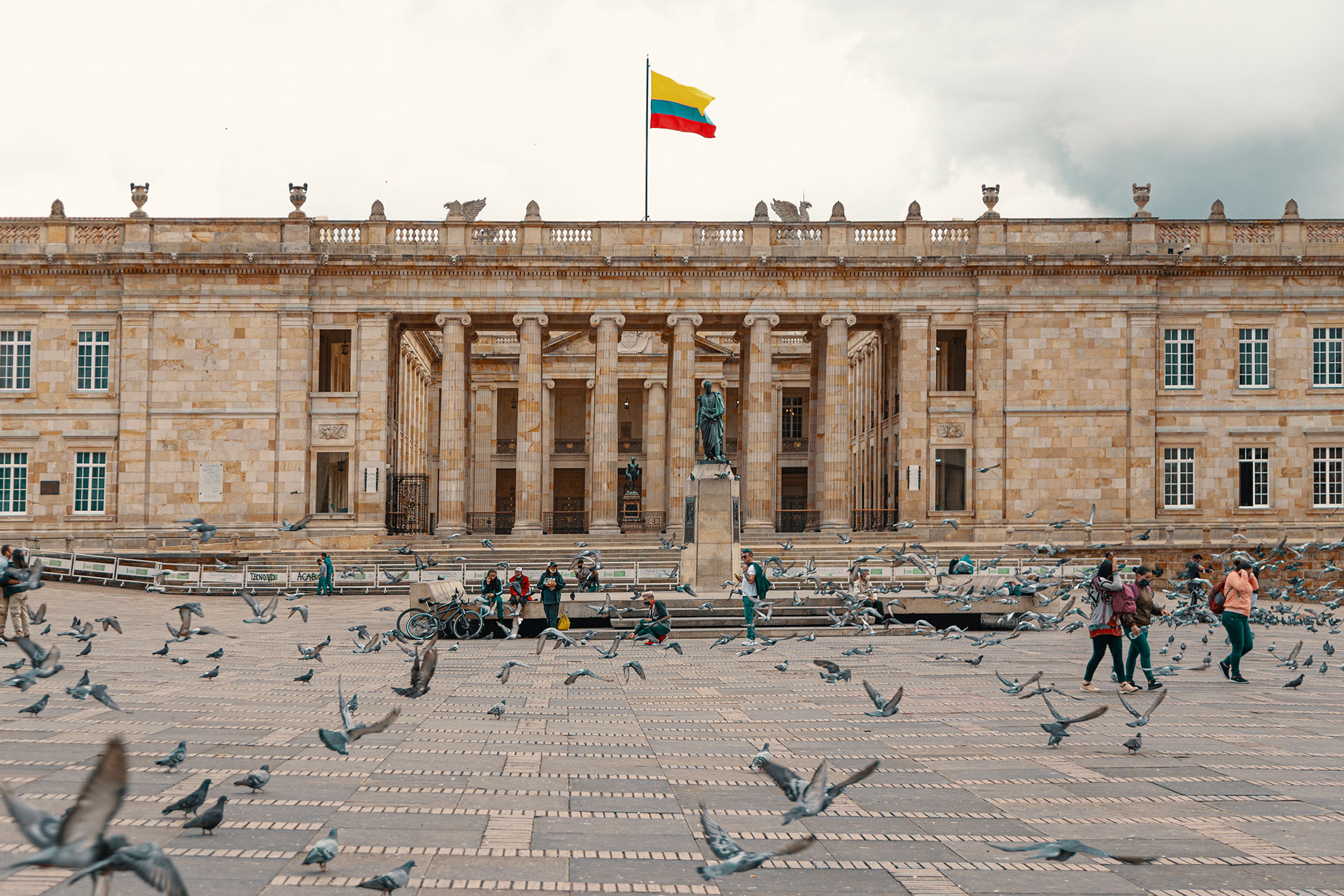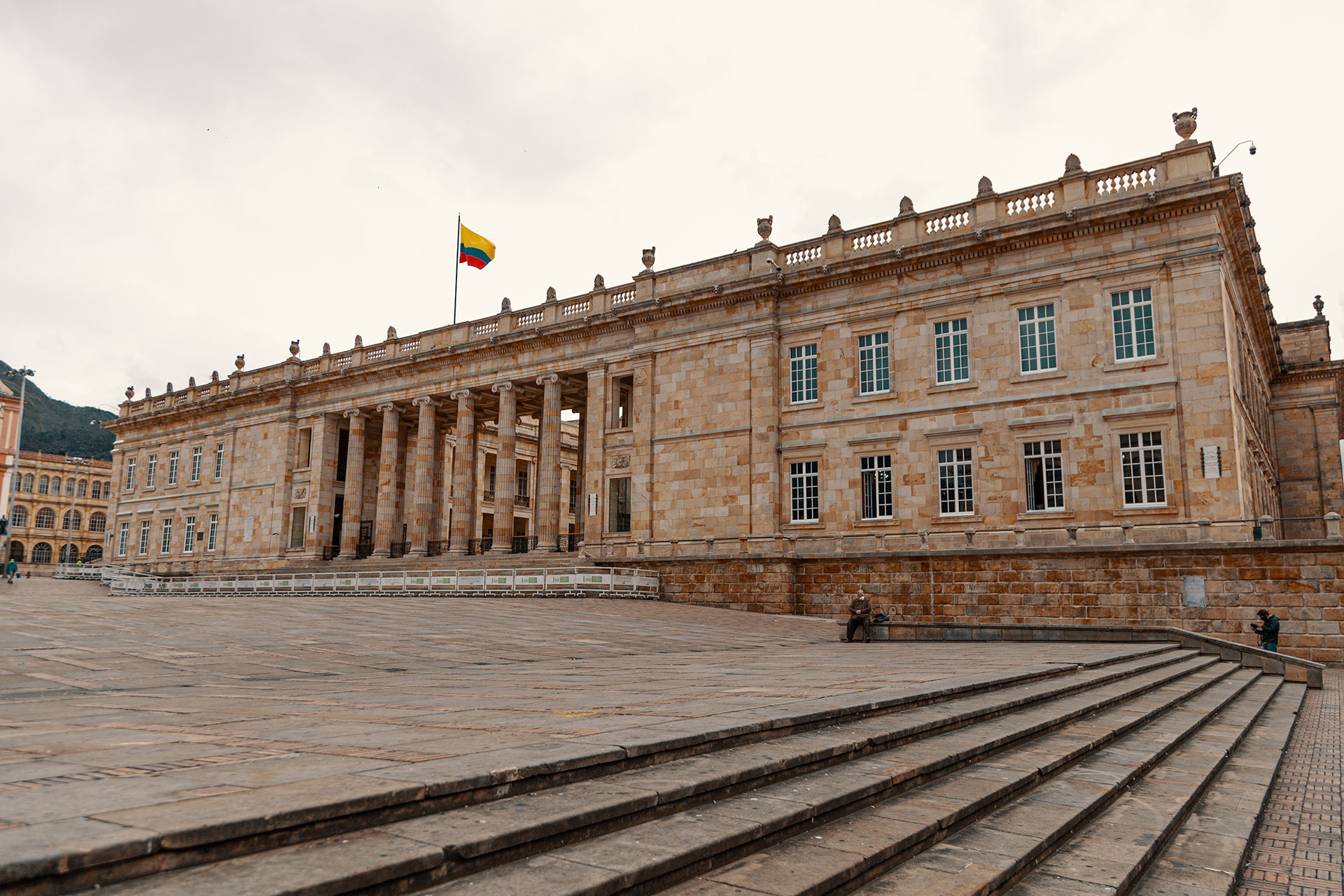Discover the history and culture of Bogotá. Explore its heritage!
Discover the history and culture of Bogotá. Explore its heritage!




La Candelaria
To visit Bogota is to embark on a cultural journey of unique flavors and incredible landscapes. If there is a place that brings together all these qualities is La Candelaria; located in the heart of the capital, is listed as one of the favorite areas of residents and visitors, thanks to its historical value and captivating colonial style.
Simon Bolívar Monument
The Simon Bolívar Monument is a monumental work located in the Plaza de Bolivar in Bogota, Colombia. It was designed by Italian sculptor Pietro Tenerani and was inaugurated on July 20, 1846. The equestrian statue of Bolivar is located in the center of the square, surrounded by allegorical figures representing freedom, justice, war and peace. The base of the monument is decorated with reliefs depicting important moments in Bolívar's life, such as the Battle of Boyacá and the signing of Colombia's independence.
Archbishop's Palace
The Archbishop's Palace of Bogota, built in the 18th century, is an outstanding example of colonial architecture. It is the seat of the Archdiocese of Bogota. Its main door was sculpted by Ludovico Consorti, famous for having made the Holy Door of St. Peter's Basilica in the Vatican. The door weighs three tons and was made in the old foundry workshops in Florence, Italy.
Colegio Mayor de San Bartolomé
The Colegio Mayor de San Bartolomé, founded by the Jesuits in 1604, is one of the oldest educational institutions in Colombia. A project of Jesuit priest Giovanny Battista Coluccini, it is located in the historic center and its colonial architecture and historical legacy make it an important cultural heritage site. Recognized for its academic excellence, the school has trained generations of Colombian leaders in various areas of knowledge.
Casa de Nariño
The Casa de Nariño is the official residence of the President of Colombia and the seat of government. Its inauguration was on July 20, 1908, by General Rafael Reyes. It was built on the grounds of the birthplace of Antonio Nariño; therefore, it bears the name of the hero of Independence. It is an example of colonial architecture. Inside, it houses important works of art and historical furniture. It is a symbol of Colombian history and politics. It offers service to the public through guided tours.
Palace of Justice
The Palace of Justice of Bogota was built in the 1970s as the seat of the judiciary of Colombia. It is the building where the high courts of Colombia operate and its full name is the Alfonso Reyes Echandia Palace of Justice. Its modern construction contrasts with the rest of the colonial buildings around the Plaza de Bolivar.
Liévano Palace
It is the building where the Mayor's Office of Bogota is located. Its construction began in 1843, and its architectural style is influenced by the French Renaissance style and was declared a National Monument in 1984. As an act of commemoration for the 450th anniversary of the founding of the city, 24 fixed plaques were installed on the second floor of the Liévano Palace, commemorating various events that have marked the history of Bogota.
Bolívar Square
It is the most important and historic square in the city. Its construction was started by the Spaniards in 1539 and the first houses of the city were built around it. The most important historical landmark that took place there was the reception of Simón Bolívar and his army, in 1819, who arrived triumphant from the Battle of Boyacá. Currently, the Plaza de Bolivar is surrounded by the main buildings of Bogota: the National Capitol, the Primatial Cathedral, the Mayor's Office of Bogota, the Cabildo, the Palace of Justice and the Museum of Independence.
Between Selfies and History
The tour will start at the National Museum, where you will be guided through the historical places of this area, such as Carrera 7.ª, Santander Park, the Environmental Axis, and Boíivar Square. The theme of this tour is focused on the history of the Bogotá's colonial area.
Once we arrive at the Plaza de Bolivar, we will know all its secrets. From there, we will continue along Calle 10 to explore more stories of La Candelaria until we arrive at the Botero Museum to enjoy this art icon.
Enjoy Bogotá through a visit to Monserrate, a city tour, food and the Gold or Botero Museum.
Together, we will visit the iconic Monserrate for panoramic views of the city, stroll through La Candelaria streets, and discover Colombia's rich cultural heritage at the Gold Museum or the Botero Museum.
On the way, we will enjoy traditional local dishes and learn about the city's fascinating history with your local guide.

